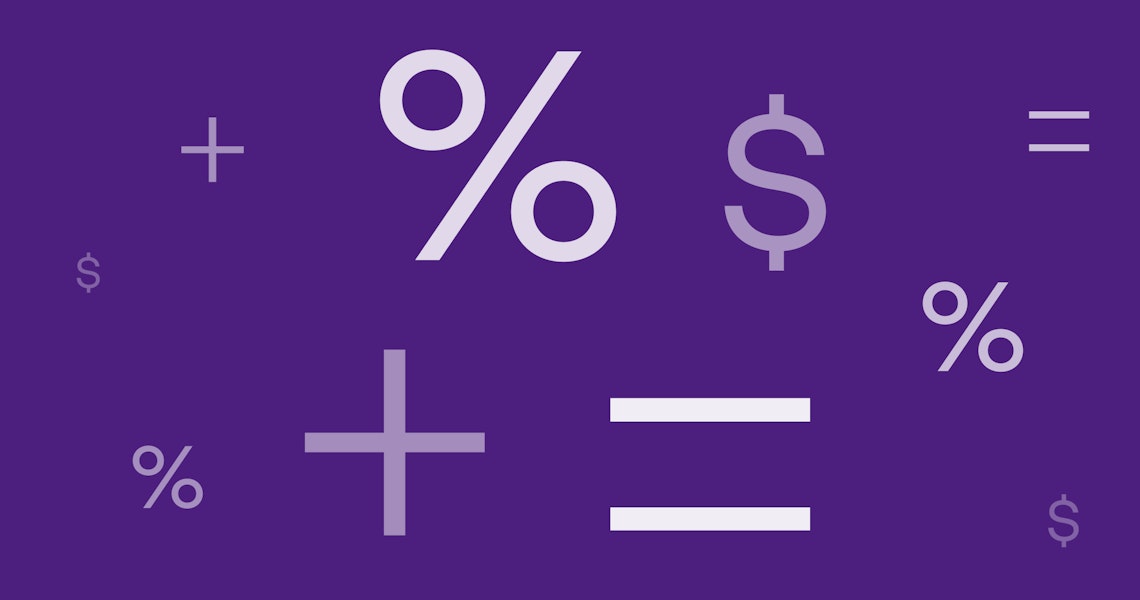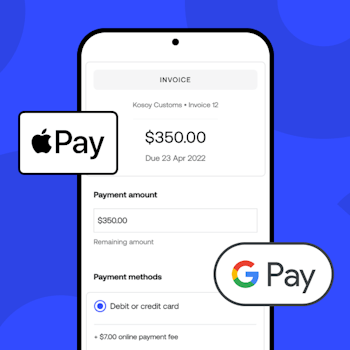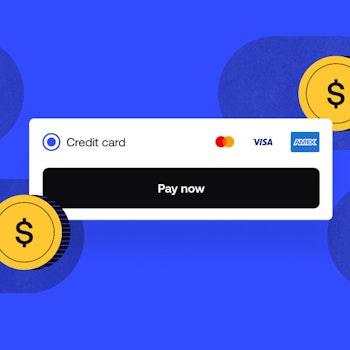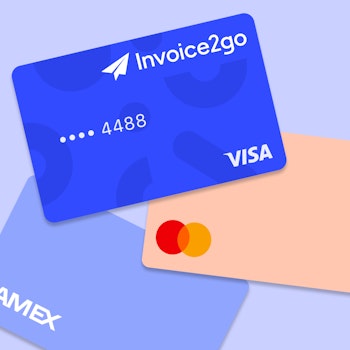
How to file estimated quarterly taxes
While tax season is often associated with spring, you may need to file estimated quarterly taxes throughout the year if you're self-employed or work as a contractor. Do you receive payments or paychecks without taxes withheld? If so, the information here likely applies to you.
Failing to meet installment obligations could result in an underpayment penalty — unless you meet specific safe-harbor criteria. So even though there will likely be a significant discrepancy between 2021 and 2022 income, the onus is on you to try to get it right.
However, there's no need to panic even if you fall short initially. The underpayment penalty won't be significant as long as you catch up quickly. The federal government charges penalties of 3% annually, which doesn't amount to a whole lot when you break it down — a quarter of one percent per month, to be precise. However, once it's past due, the amount you owe starts accruing interest (which compounds daily) until it is paid in full. Past due payments will be charged interest at the federal short-term rate plus 3%.
Also, if you underestimate quarterly taxes, you might still be subject to a penalty. The late-filing penalty is 0.5% of what you owe each month or part of the month you don't pay, up to 25% of the amount owed.
You can use Form 2210 to determine whether you need to pay an estimated tax penalty and if so, how much.
So, we're going to do a deep-dive into quarterly estimated tax payments, who should make them, how to estimate what you owe, and ultimately, how to get it done without any undue stress.
Who should make quarterly estimated tax payments?
The Fed requires all taxpayers to pay at least 90% of their taxes in one of two ways: either through tax withholding or by filing quarterly.
If you have income that is not subject to withholding, such as if you are a self-employed small business owner or have income from dividends, interest, business earnings, capital gains, or alimony, you'll need to make estimated tax payments each quarter based on your income.
If you fall into one of the following categories, you do not need to make installments:
- The tax you owe is less than $1,000 for the filing year after subtracting your federal withholding and tax credits from the total tax you expect to owe.
- Your federal withholding will be at least 90% of the total tax you'll owe for the filing year.
- Your federal withholding covers 100% of what you paid in 2021. However, if your adjusted gross income was $150,000 or more ($75,000 for married people filing separately), the safe harbor amount is 110%.
You're also exempt from paying estimated taxes if you had zero tax liability last year, your last tax year spanned 12 months, and you were a US citizen or resident that entire year according to Business Insider.
The bottom line here? If you don't fall into any of the above categories, you need to pay quarterly taxes.
As for taxation at the state level, each state that has income tax has its own requirements and safe harbors, so check in with your state taxation office to find out what, if anything, has changed for 2022.
Why wait? Filing your taxes can take just minutes!
If you already keep excellent financial records and have a reasonably good idea about your income, filing your quarterly estimated taxes is a snap. Tax estimates will never be an exact science, but coming close is much better than falling short.
Form 1040-ES comes with a worksheet to help you determine your taxable income based on the current rules. Once you've completed the calculations, you can choose one of several payment options for what you owe, including through their mobile app, IRS2Go — which should be easy to remember because it sounds so oddly familiar, doesn't it?
If you're sending a check, keep in mind that the government won't accept checks in amounts of $100 million or more. In that case, you'll have to split the payment into two or more portions or arrange an electronic transfer (wink).
When to pay quarterly taxes
When it comes to filing estimated taxes, it's helpful to plan ahead – especially because these dates don't align with regular calendar quarters. Also, you can make payments more often than four times a year. Some business owners find making 12 smaller monthly payments easier than four larger ones.
The estimated tax deadline dates for the 2022 calendar year are as follows:
- First-quarter: April 18, 2022. This is for income earned between January 1 and March 31, 2022
- Second-quarter: June 15, 2022. This is for income earned between April 1 and May 31, 2022.
- Third-quarter: Sept. 15, 2022. This is for income earned between June 1 and August 31, 2022.
- Fourth-quarter: Jan. 17, 2023. This is for income earned between September 1 and December 31, 2022.

How to calculate estimated quarterly taxes
Accurate projections go a long way to ensuring your estimated tax installments will also be correct. If yoyou'veeen in business for a few years already, itit'lle easier to forecast, but it might be a little more challenging for new small business owners.
In simple terms, you calculate your tax owing for the year by taking your total tax liability and dividing it by four. Your total tax liability includes your self-employment tax, income tax, and any other taxes you generally pay.
Further complicating matters are various new rules and credits the IRS has recently enacted, but wewe'llover those later on in the article.
If yoyou'reoing your tax estimates yourself — as opposed to having your accountant figure it out — the best way to do it is by getting the appropriate IRS estimated tax form and worksheet and following their detailed instructions.
For all legal, unincorporated entities, including self-employed contractors, use Form 1040-ES. Corporations should use Form 1120-W.
First, yoyou'llave to figure out your projected income for the year. You start with your gross estimated income and subtract your adjustments.
Here is a list of some of the things you can deduct from the gross amount:
- Self-employed health insurance
- Health Savings Account contributions
- Retirement plan contributions
- IRA contributions
- Any penalties on early savings withdrawal
- Student loan interest to a maximum of $2,500
- Any alimony payments you made
- Moving expenses (armed forces members only)
If you do not itemize your deductions, yoyou'llake a standard deduction according to your filing status (married, single, etc.).
Check out our article with more information about tax deductions here. You can also use the worksheet provided on page 36 of IRS 2022 Publication 505.
In general, the IRS suggests using your previous yeyear'sederal tax return as a guide, but hehere'shere things might get a little complicated. If your business income changed significantly last year, such as if you were unable to work during the shutdowns and just recently started up again, using your 2021 tax return as a template might not be the best strategy. Ultimately, if you underestimate what yoyou'llwe this year, yoyou'lleed to make it up by the time you file this yeyear'saxes, and nobody likes those kinds of surprises.
Conversely, if you overestimate your quarterly tax, you can recalculate based on whwhat'seally going on when you go to file next quarter.
Keep in mind also, if your personal situation has changed — if yoyou'veotten divorced, married, taken a second job, or if you get any other type of income that dodoesn'tithhold taxes — it could impact the amount of tax you owe. Additionally, any income you earn on side-hustle-type businesses, like Airbnb, renting out your ADU, or gig-economy-type jobs is all taxable, so yoyou'lleed to take these into account as well.
If yoyou'veaken on any employment income, you might want to consider asking them to increase your withholding as this will reduce the amount you have to pay on installment.
How to pay estimated quarterly taxes as a self-employed professional
Now to eveverybody'savorite part — paying the IRS. Okay, granted, most of us dodon'tnjoy paying estimated quarterly taxes, but you have to admit itit's good feeling when you know itit'sll over and done with. Right?
When yoyou'reeady to pay, the IRS provides various payment methods by which you can settle up. Plus, if you overpaid for the 2021 tax year, you could credit that overpayment to your installment to reduce the amount owing.
You may also:
- Mail your payment by check or money order along with a payment voucher, found on page 11 of Form 1040-ES.
- Pay estimated taxes electronically with your bank card or credit card via the IRS website.
- If you use tax preparation software or work with a tax firm, you have the additional option of paying quarterly taxes by electronic fund withdrawal. You can only use this option if you e-file.
- If you cacan'tay the amount owed all at once, you can make an arrangement with the IRS to pay monthly installments against the balance. You can apply for a payment agreement online and will be notified immediately if you are accepted.
Alternatively, you can download the IRS2Go app, through which you can pay by card, manage your payment agreement, and get reminded when you have a filing deadline coming up. If you pay through the app, it is credited to your account instantly, and you wowon'tave to submit a payment voucher.
What if I blow off my quarterly taxes and just deal with it later?
If you blow off your quarterly installment deadlines and payments, just know that yoyou'reoing to have to deal with it eventually. Unlike the ache of a bad breakup or a nasty sunburn, itit'sot going to go away on its own.
Plus, the longer you wait to deal with your tax issues, the more the penalties will pile up. Depending on how much you owe and how quickly you pay it, that amount could end up being anywhere from a few hundred to a few thousand dollars – or more.
Nobody needs to be giving the IRS more than their due. That extra cash could come in handy for so many other valuable things for your small business.
Some tax rules have changed due to coronavirus
Business and personal taxpayers would do well to explore any tax relief they might be entitled to under the Coronavirus Relief Act. For example, if you were entitled to payments under the act but did not receive them, you may be able to deduct the amounts from your tax owing.
Employers and independent contractors can also apply for tax credits to cover amounts paid for sick and family leave, childcare, or employee retention. Be sure to understand everything yoyou'rentitled to claim, as this could reduce your installment payments in a meaningful way.
If you need help finding out what coronavirus tax credits your business might be eligible for, speak to a business tax professional before itit'sime to make your next installment.
Looking for ways to simplify your bookkeeping and manage your quarterly taxes? We've got your back.
Related Articles

How to accept credit card payments on Invoice2go in 3 simple steps

Accept payments online via Apple Pay and Google Pay

Must-not-miss write-offs as you wrap up 2022 year-end finances

5 ways accepting credit and debit card payments helps your business stay resilient

4 easy ways to increase cash flow today

What is Small Business Saturday and why is it important?
The features and surprising benefits of a well-designed packing slip
